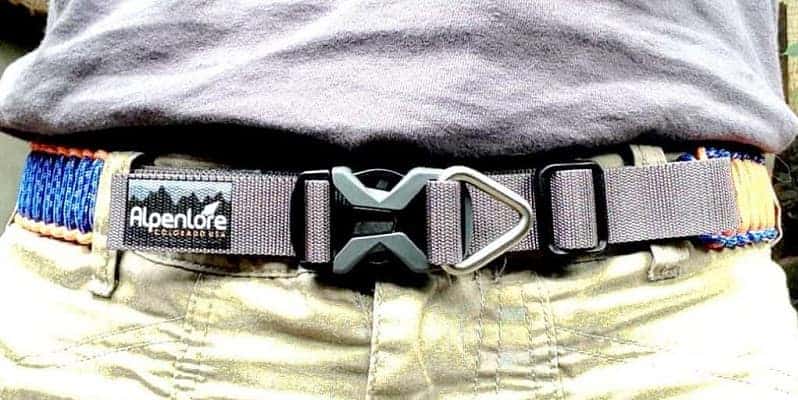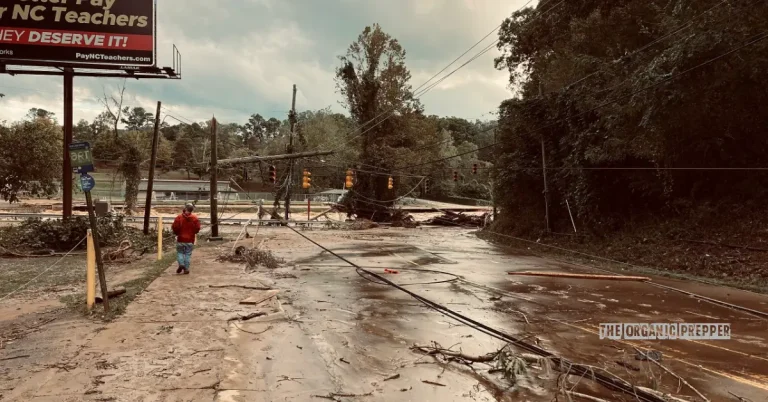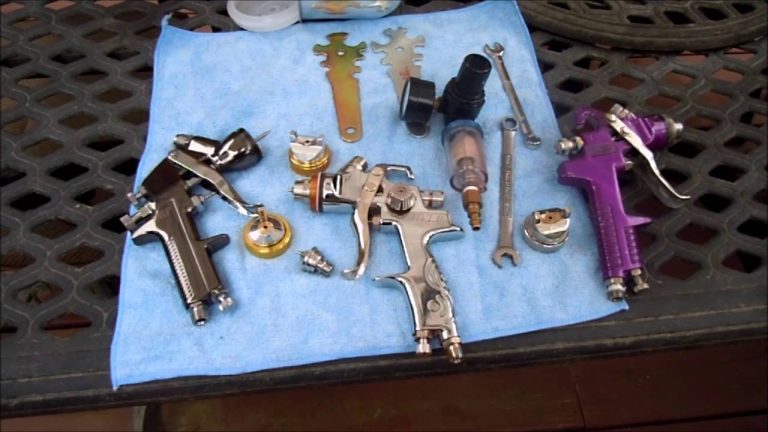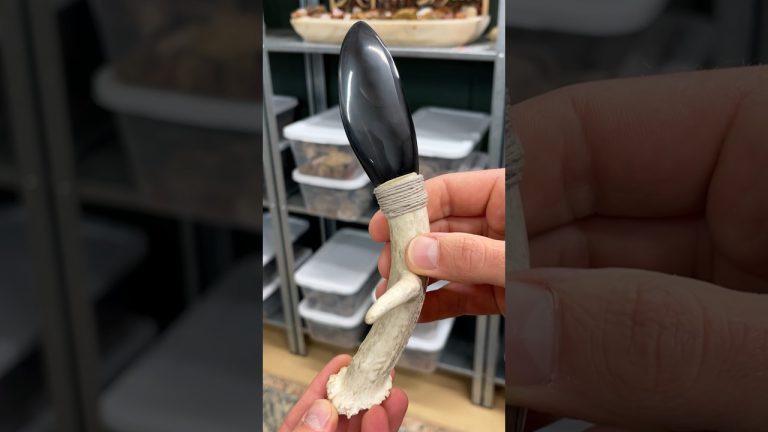Being a survivalist isn’t about stocking up on a lot of gear.
Survival is a mentality that involves using the everyday items around you to your advantage. One of the everyday items that could save your life is a survival belt.
Here, we will go over the best types of survival belts, their pros and cons, and their uses.
Types of Survival Belts
Recently, there has been a massive surge in specialty survival products and gear – including survival belts or “tactical belts.” These survival belts are made with built-in features like:
- Made from paracord
- Abrasion-proof straps
- Ferro rods for starting fires
- Hidden compartment for cash
- Hollow compartment in buckle which contains tools like multi-tool, fishing hooks, wire, or a signaling mirror
- GPS chip (mostly found in spy belts)
Now, these specialty survival belts are cool. But, anytime something seems “cool,” you’ve got to be careful. Usually, it is just some kitsch gimmick and won’t be useful in a survival situation.
For example, I tested one survival belt with a knife built into the buckle. Cool, right?
But, when I went to use the knife, it immediately snapped and broke. And that’s not including all the problems with security you could have if you forgot to remove the belt before going through a metal detector!
Don’t rely on gimmicky survival gear!
The survival gear industry is filled with cheap items that, while they seem cool, are just gimmicks. This is something I’ve ranted about in my post about Why You Shouldn’t Buy Bear Grylls Survival Gear.
Instead of getting a “survival belt” with useless gear, getting a very strong belt and carrying around an EDC survival kit is wiser.
Survival Uses for a Belt
Here are some of the things you can do with a survival belt. There are no gimmicks; the belt just needs to be strong enough to handle the task.
- Emergency Medical Uses: You can use a belt as a tourniquet around an injured limb, as a sling, or to secure a splint. Read: How (and when) to use a tourniquet
- For Hauling Heavy Items: If you have a tarp, you can use it with a belt to haul heavy items. Tie the tarp to the belt buckle. Then pull on the belt. The tarp will cut down on friction, so you can pull the load easier.
- Carrying Wood: If your belt is long enough, you can bundle wood for easier carrying.
- As a Towing Line: If you get a survival belt with high tensile strength, you can use it for towing cars or as a line to help someone who fell up a cliff.
- As a Leash: Dog’s leash broke? Just use your belt instead.
- To Tie Someone Up: It takes some practice to tie up someone securely with a belt, but it will get the job done!
- Sharpening Tools: This only works with a leather belt but can be very useful for keeping your other survival tools sharp.
- As a Weapon: A belt makes a great whip, but you can take it further. Secure something heavy to the end of the belt and use it to hit attackers. Or flail it around you in a circular motion to keep a group of attackers away. Learn more about the types of weapons here.
Leather Belt vs. Webbing Belt vs. Paracord Survival Belt
When choosing a survival belt, you have three main material options: leather, webbing, and paracord. Each of these has its pros and cons.
Leather Survival Belts
Leather is a sturdy natural material that holds up in many survival situations, such as if you need to make a splint or haul firewood.
You can also use it as a strop for maintaining the edge on your tools – something you can’t do with the other survival belt materials.
Leather also looks nice (if you work in an office setting, I doubt your boss will be happy with you wearing a paracord belt), so you can wear it in all situations.
But leather isn’t strong enough to hold up when it comes to hardcore survival situations. It will also gradually wear out, especially when exposed to water and the elements.
Webbing Belts
Webbing is the material used on military and other tactical belts. One of the benefits of webbing belts is that they are lightweight yet solid.
They are comfortable to wear and won’t cause chaffing if your backpack rubs against your belt.
You’ve got to be careful when choosing webbing belts, though. Most are not designed for survival situations and are thin and weak.
Make sure the webbing belt is military spec, and then look up those military specs!
For example,
- 1 inch 8962 webbing has a tensile strength of just 600lbs
- 1 inch 7717 webbing has a tensile strength of 6000 lbs.
That’s a 10x difference in strength! So, you can see why checking the tensile strength of tactical belts matters so much.
You can find a chart of military spec webbing tensile strengths here.
Paracord Belts
Paracord is one of the most important and diverse survival gear you can get.
There are many uses for paracord, from hanging a bear bag to creating a tripwire.
Unlike the other survival belt materials, paracord comprises individual threads that can be unwound. These fibers have their own uses, such as a fishing line or sewing thread.
If you aren’t going to wear a paracord bracelet, then a paracord belt is a great way to ensure you always have this survival item on you.
Some people complain that it causes chaffing when worn with a backpack (because paracord belts are thicker). Also, some people say that paracord belts don’t do a great job of holding their pants up – which defeats the point of wearing it as a belt.
You can easily make your own if you don’t want to buy a paracord survival belt. See these cool paracord projects for instructions on how to make a paracord belt.
Best Survival Belts Reviewed
Concealed Carry Leather Belt
Relentless Tactical Concealed Carry
14oz leather | Lifetime warranty | Handmade in USA
Stainless steel buckle | 1 ½ inch width | Pant size 30 to 52
This is a survival belt designed for concealed carriers. What makes it different than other belts? It is very sturdy and won’t sag under the weight of a firearm.
The belt does not have a steel core or wire in it. Thus, it is more flexible but not as strong. Even without the steel core though, the 14oz leather is going to handle most survival tasks, such as hauling wood.
There are two styles available: stitched and woven. Get them stitched if you want more strength. Get the woven if you’d rather have comfort and flexibility.
Budget Belt
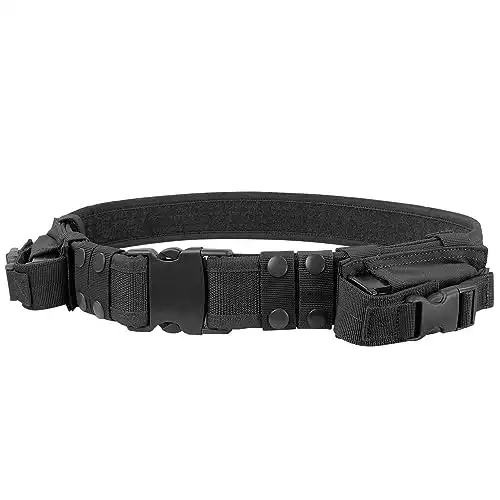
Condor Tactical Belt
Two removable magazine pouches | 2” width | Quick release plastic buckle
Fits up to 44” waist | Comes with 2 Velcro keepers
The brand Condor is known for making great quality but affordable survival gear. For example, I love their survival backpacks.
Considering how cheap the Condor belt is, it is of very good quality. The belt doesn’t fray or tear, even after extended use.
I am a bit concerned about how well the belt buckle will hold up. As it is made out of plastic, it’s likely to snap under heavy loads – not the belt you’d want to use for bushcraft tasks like hauling wood.
Note that this isn’t going to fit through your belt loops. It is designed as a duty belt, so needs to be attached to your underbelt with keepers or worn over a jacket.
The location and direction of the pistol mags are a bit awkward, but still pretty well designed for such a cheap survival belt.
Multi-Tool Belts
If you like the idea of multi-tool belt buckles, you’ll want to check out these options too:
What other survival uses can you think of for a belt? Let us know in the comments.







